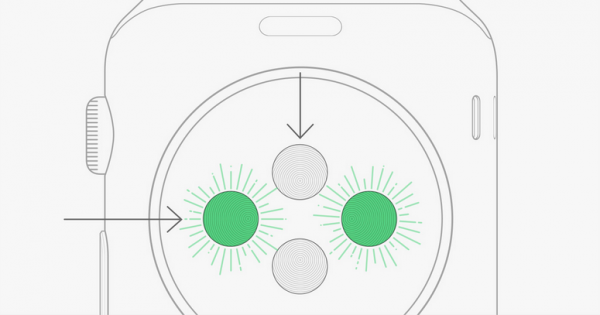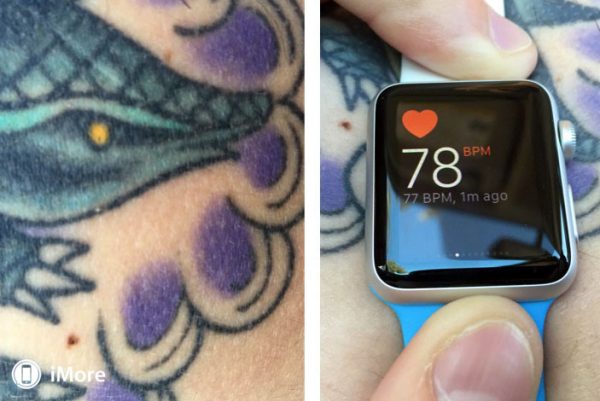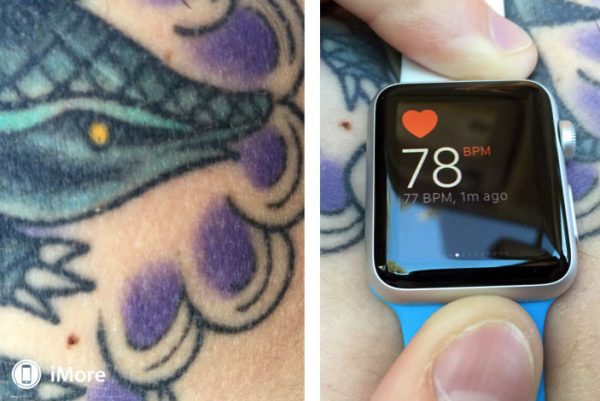One of the popular hostages on Twitter today was #tattoogate. People started to wonder if the tattoo on a wrist have the impact on the accuracy of the Apple Watch sensor readings.

“Blood is red because it reflects red light and absorbs green light. Apple Watch uses green LED lights paired with light‑sensitive photodiodes to detect the amount of blood flowing through your wrist at any given moment. When your heart beats, the blood flow in your wrist — and the green light absorption — is greater. Between beats, it’s less. By flashing its LED lights hundreds of times per second, Apple Watch can calculate the number of times the heart beats each minute — your heart rate.
The heart rate sensor can also use infrared light. This mode is what Apple Watch uses when it measures your heart rate every 10 minutes. However, if the infrared system isn’t providing an adequate reading, Apple Watch switches to the green LEDs. In addition, the heart rate sensor is designed to compensate for low signal levels by increasing both LED brightness and sampling rate.” – Apple said.
The problem is color interference that is caused by artificial pigments which are not human the same color as the skin. iMore try to detect this issue and they found:
“For disclosure: We tested the Watch’s sensors against tattooed and non-tattooed sections on both the wrist and elsewhere on the body. On non-tattooed non-wrist sections, the sensors gave identical readings as when also tested on the wrist; on tattooed sections, sensor readings varied wildly depending on colors and shading.
Dark, solid colors seem to give the sensor the most trouble — our tests on solid black and red initially produced heart rate misreadings of up to 196 BPM before failing to read skin contact entirely. Tests on lighter tattoo colors including purple, yellow, and orange produced slightly elevated heart misreads of 80 BPM (compared to 69 BPM on the wearer’s non-tattooed wrist), but otherwise did not appear to interfere with skin contact registration.
It is not yet completely clear whether a tattoo on the wrist can affect the sensor readings. Apple has not given any explanations about this issue yet.
Other News: Is Apple Abandon measurement of blood oxygen on Apple Watch Sensor?







